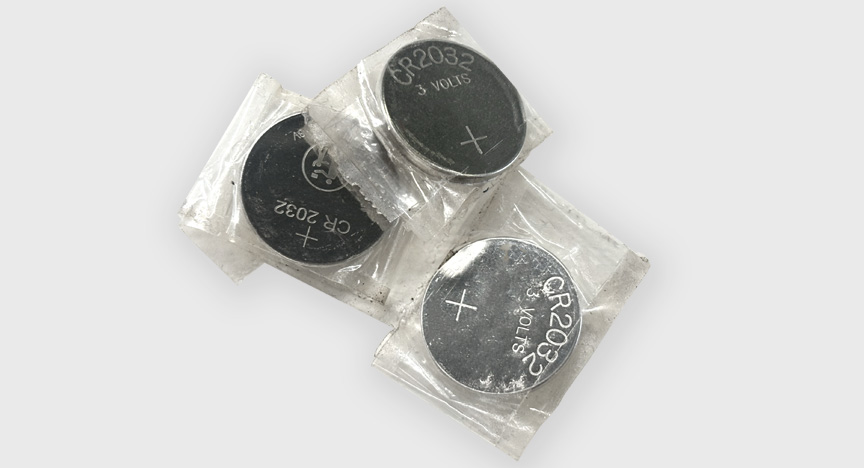
As children develop, they explore and learn about their environment by investigating new things. Part of that normal developmental process often involves putting things in their mouths and ears. Infants who are mobile are more likely to find things to put in their mouth, but even non-mobile infants will mouth objects that are given to them, often by young siblings.
Button batteries are small, silver, round shiny items that look like coins, toys or even lollies to small children. They’re a common household item that is small enough to be swallowed and become lodged in a child’s throat.
If swallowed or inserted, they can cause a severe caustic burn, so it is important to act quickly if you suspect your child has ingested or inserted a button battery.
Where button batteries are found
Button batteries are commonly found in a wide range of household items such as:
- Remote controls
- Alarms/timers
- Keys
- Cameras
- Watches
- Novelty items (often cheaper promotional/show bag items)
- Children’s toys
- Button battery packaging
They can be accessed by kids directly from the battery packaging or from the battery-operated product if:
- The product breaks releasing the battery
- The battery compartment is not child-resistant
- The battery compartment is child-resistant but is not reclosed properly
- The battery is dropped or left lying about after removal from the product
For many years, children’s toys were the only products required to be durable, with a child resistant battery compartment restricting button battery access by young children.
However, in 2020, Australia introduced world first regulation requiring all products to meet similar requirements of the children’s toy standard. The regulation also requires all lithium button batteries and other button batteries bigger than 16mm in size to be sold in child resistant packaging.
If ingested, seek immediate medical attention
Signs and symptoms that your child may have ingested a foreign object such as a button battery include:
- Coughing or choking episode - the battery may have been swallowed but become stuck in the food pipe
- Drooling
- Food refusal (sometimes only refusing solids)
- Noisy breathing (can sound like croup)
- Vomiting
- Regurgitation (bringing food back that has not made it to the stomach)
- Pain (this is often poorly localised and can be chest or tummy)
- Grunting - this can be a marker of pain in little kids
- Bleeding (a late sign)
- Red or black vomits
- Red or black poos
- Blood coming through the nose (this can be vomited blood)
However, it is also possible for your child to display no symptoms after ingesting a button battery.
If you suspect your child has ingested or inserted a button battery, it’s important to seek urgent medical attention immediately.
- If your child is having trouble breathing or is bleeding, call Triple Zero (000).
- Otherwise, call the Poisons Information Centre on 13 11 26 for fast expert advice 24/7
Do not let them eat or drink or try to induce vomiting. The Poisons Information Centre staff will be able to direct you to the nearest appropriate facility based on the circumstances, the age of your child and your location. They are also able to liaise with retrieval services if needed.
Immediate medical care is important because button batteries in the oesophagus can cause severe damage within as little as two hours if not treated quickly.
How to prevent button battery injuries
Here are some important ways to prevent button battery injuries:
- Do a home audit: How many products use button batteries?
- Avoid purchasing new items that require an accessible button battery. Instead, buy products that operate on AAAs or larger batteries or have non-replaceable batteries that are USB charged.
- If you buy button battery operated products, ensure the product is robust and has a secure, child resistant battery compartment that:
- Requires a tool to open or,
- Requires two different movements applied at the same time to unlock the compartment
- When purchasing button batteries, look for options in child-resistant packaging that needs scissors to be opened
- Keep button batteries and products out of reach of children and locked away. Beware of climbers!
- Dispose of old flat batteries immediately as they can still cause harm if ingested or inserted:
- Change batteries away from children
- Immediately tape both sides of the battery with clear sticky tape. This makes it harder for a child to swallow the battery and can limit damage if ingested
- Store the battery in a vented glass jar out of reach before safely disposing of the battery into your closest battery recycling point
- Do not put button batteries into your general waste because they present a fire risk for the waste disposal industry
- Closely supervise children while they’re playing with toys or devices that have button batteries
How to properly dispose of button batteries
Batteries are not safe to dispose into your household bin. They need to be safely and environmentally recycled into a B-cycle (Battery Recycling) drop off point. You can find these at most major supermarkets and at approved accredited battery collectors, sorters, or recyclers.
Visit the B-Cycle website for more information on the safe disposal of batteries and to find your nearest b-cycling drop off point.
Useful websites
Queensland Poisons Information Centre - Button batteries | Queensland Poisons Information Centre (health.qld.gov.au)
B-Cycle - Find a B-cycle Drop off point - B-cycle (bcycle.com.au)